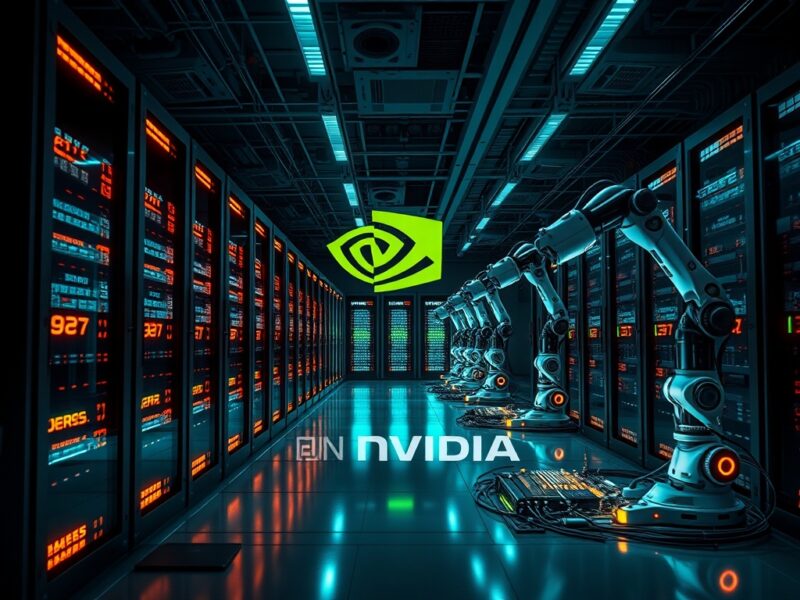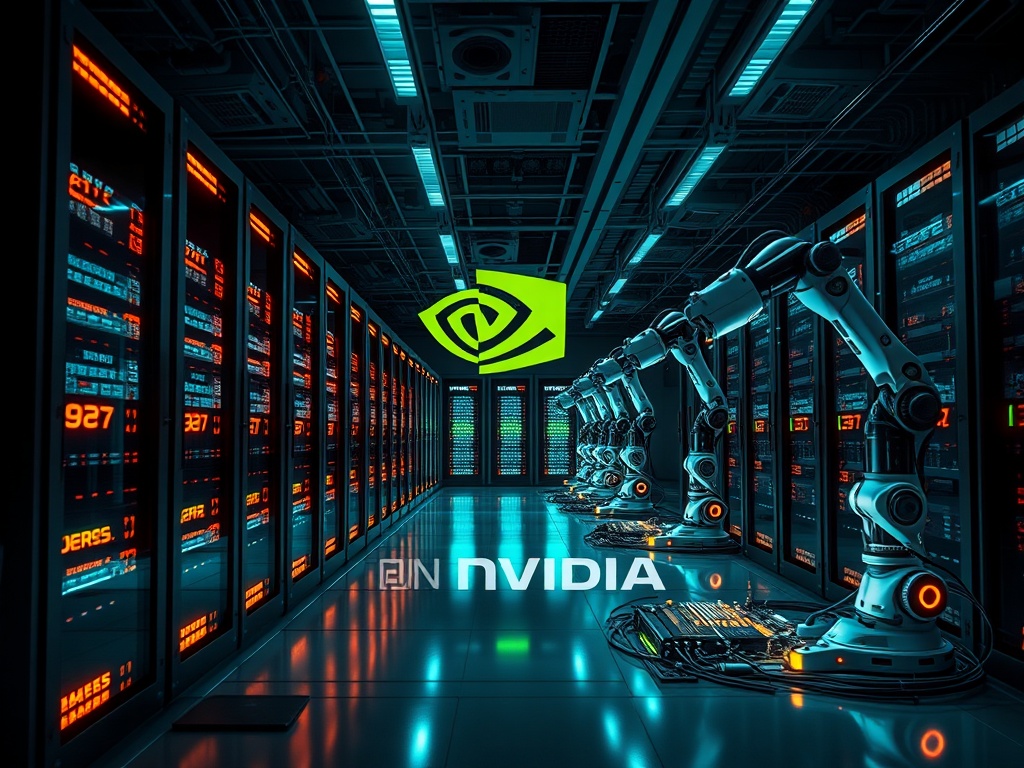Nvidia AI’s Remarkable Journey: How a Research Lab Forged a $4 Trillion Empire
0
0

BitcoinWorld

Nvidia AI’s Remarkable Journey: How a Research Lab Forged a $4 Trillion Empire
For many in the cryptocurrency world, the name Nvidia often conjures images of powerful GPUs churning out digital gold through mining operations. Yet, beyond the blockchain, this tech giant has quietly undergone a profound transformation, spearheaded by its often-overlooked AI research lab. This isn’t just a story of a company growing; it’s an incredible tale of foresight, relentless innovation, and how a small team’s dedication to groundbreaking research propelled Nvidia to a staggering $4 trillion valuation, fundamentally shaping the future of artificial intelligence.
The Genesis of a Giant: Nvidia’s AI Research Lab
In 2009, when Bill Dally joined Nvidia, its research lab was a modest operation, home to only about a dozen brilliant minds. Their primary focus was ray tracing, a cutting-edge rendering technique essential for computer graphics. Fast forward to today, and that same lab has blossomed into a powerhouse employing over 400 specialists. This expansion wasn’t accidental; it was a strategic move that laid the groundwork for Nvidia’s dominance in the artificial intelligence era. Bill Dally, now Nvidia’s chief scientist, was instrumental in this growth. His journey from Stanford to Nvidia, convinced by Jensen Huang and David Kirk, highlights the company’s commitment to attracting top-tier talent. Dally saw Nvidia as the ideal place to make a significant global contribution, recognizing the immense potential within the company’s vision.
Pioneering the Future: Nvidia AI’s Early Bet
Under Dally’s leadership, the research lab immediately diversified its efforts beyond ray tracing, delving into critical areas like circuit design and Very Large-Scale Integration (VLSI). This broadened scope was crucial for future advancements. Perhaps the most impactful decision was Nvidia’s early, audacious bet on Nvidia AI. As early as 2010, more than a decade before the current AI boom, Nvidia began experimenting with the concept of AI-specific GPUs. Dally recounts telling Jensen Huang, “This is amazing, this is gonna completely change the world.” Huang’s belief in this vision led Nvidia to specialize its GPUs, develop extensive software support, and engage with AI researchers worldwide. This proactive approach, long before AI was widely recognized as relevant, gave Nvidia an unparalleled head start, positioning it to become the indispensable backbone of the AI revolution.
Shifting Gears: The Rise of Robotics AI
With a commanding lead in the AI GPU market, Nvidia’s strategic focus has naturally shifted to new frontiers beyond data centers. This quest for the next wave of demand led them directly to physical AI and robotics AI. Bill Dally envisions a future where robots are ubiquitous, and Nvidia aims to provide the “brains” for all of them. This ambitious goal necessitates developing foundational technologies. Enter Sanja Fidler, Vice President of AI Research at Nvidia, who joined the lab in 2018. Fidler was already working on robot simulation models at MIT when Jensen Huang’s personal invitation convinced her to join. She found a perfect cultural and topical fit, leading to the creation of the Omniverse research lab in Toronto, dedicated to building simulations for physical AI.
Driving Progress: GPU Innovation and World Models
The journey into physical AI presented significant challenges, particularly in generating the necessary 3D data for simulated worlds. Fidler’s team tackled this head-on, investing in “differentiable rendering” – a technology that allows AI to interpret 3D scenes from images and videos. This foundational work led to significant GPU innovation. In 2021, Omniverse released GANverse3D, its first model capable of converting images into 3D models. They then extended this process to video, using footage from robots and self-driving cars to create detailed 3D simulations via the Neuric Neural Reconstruction Engine, announced in 2022. These technologies form the core of Nvidia’s Cosmos family of world AI models, unveiled at CES. The current focus is on dramatically increasing the speed of these models, aiming for reaction times that are hundreds of times faster than real-time, which is crucial for responsive and intelligent robotic applications.
The Path to a Trillion-Dollar Company and Beyond
Nvidia’s consistent investment in pioneering research and development is a key factor in its ascension to a trillion-dollar company. The recent SIGGRAPH computer graphics conference saw Nvidia announce a new fleet of world AI models specifically designed for creating synthetic data to train robots, alongside new libraries and infrastructure software for robotics developers. Despite the undeniable progress and the growing excitement around humanoids, both Dally and Fidler maintain a realistic outlook. They suggest that widespread household humanoids are still several years away, drawing parallels to the timeline of autonomous vehicles. However, they remain optimistic about the foundational role of AI in this evolution. Visual AI enhances robot perception, while generative AI is proving invaluable for task planning and manipulation. As individual problems are solved and training data expands, the capabilities of these robots will continue to grow exponentially.
A Legacy of Vision and Impact
Nvidia’s journey from a video game GPU startup to a $4 trillion AI powerhouse is a testament to the power of sustained research and a clear vision. The once-tiny research lab, now a sprawling hub of innovation, has been the engine behind this remarkable transformation. By consistently pushing the boundaries of what’s possible in GPU technology, AI, and now robotics, Nvidia continues to shape the future of computing and intelligent systems. Its commitment to long-term, foundational research ensures that it remains at the forefront of technological advancement, driving progress that impacts industries worldwide.
To learn more about the latest AI market trends, explore our article on key developments shaping AI Models features.
This post Nvidia AI’s Remarkable Journey: How a Research Lab Forged a $4 Trillion Empire first appeared on BitcoinWorld and is written by Editorial Team
0
0
 Manage all your crypto, NFT and DeFi from one place
Manage all your crypto, NFT and DeFi from one placeSecurely connect the portfolio you’re using to start.






